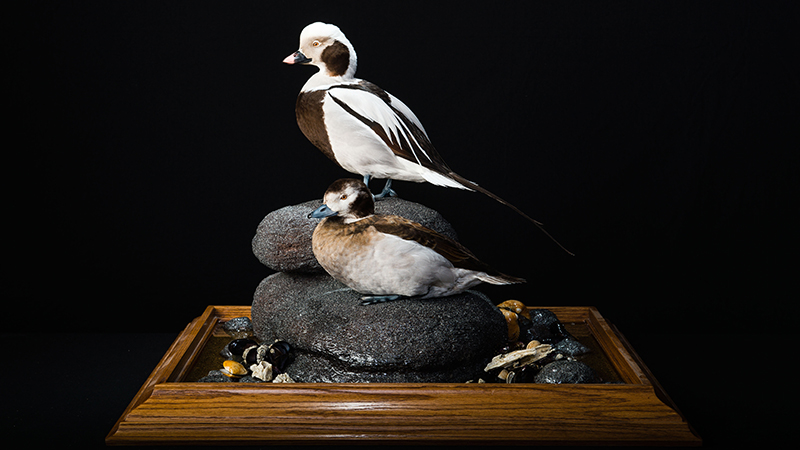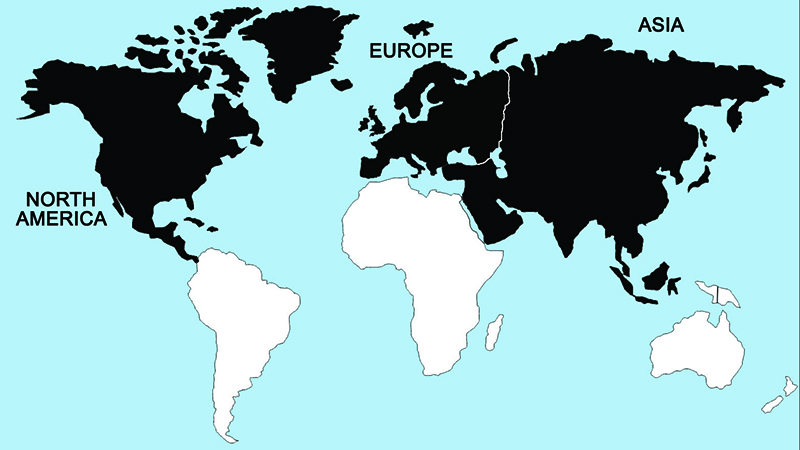Long-tailed Duck

This attractive sea duck was once called the oldsquaw in North America, a species that occurs in arctic and sub-arctic waters around the Northern Hemisphere, and is perhaps the most abundant of all the sea ducks. The now-accepted English name “long-tailed duck” is more appropriate and more descriptive, at least for the male, which has a long, pointed tail much like that of the northern pintail. The female, however, has a short tail. Both sexes have an extremely complicated sequence of molts and plumages, making simple descriptions of their appearance almost impossible. Suffice it to say that during the winter the male is mostly white, with a black breast and ear patches, whereas during the summer the head, neck, and breast are mostly black, with the flanks remaining white and a white patch developing around the eyes. The female has piebald black and white head markings throughout the year, but its flanks are always grayish white and its breast is always a mottled or scalloped brown. Both sexes have wings that are mostly dark above and below, the secondaries having a brownish sheen in some cases. They are superb divers, reportedly diving to depths up to 200 feet to obtain their food.
Courtship is a spirited affair, with aerial and aquatic displays. The wild calls of the males carry far over the tundra in one of the most evocative and memorable of all the sounds of the arctic spring. In North America this species migrates as far as extremely high arctic latitudes of northern Greenland and arctic Canada to nest. Females hide their nests in short tundra vegetation and remain constantly on the nest while they incubate their six or seven eggs for 24–26 days. The ducklings grow extremely rapidly, at times fledging in as few as 35 days, which allows the species to breed in areas having only about two months of frost-free weather in summer.
Regions Birds Are Found

Collection Location & Year
U.S. - Alaska 2001
Taxonomy
| Order | Anseriformes |
|---|---|
| Family | Anatidae |
| Tribe | Mergini |
| Species | Clangula |
| Genus | hyemalis |
Gender
Female & Male
References
- Johnsgard, P. A. 1975a. North American Game Birds of Upland and Shoreline. Lincoln, NE: Univ. of Nebraska Press.
- Johnsgard, P. A. 1978. Ducks, Geese and Swans of the World. Lincoln, NE: Univ. of Nebraska Press.
- Elliot, A., J. del Hoyo, J. Sargatal, and C. Imboden, eds. 1992. Handbook of Birds of the World. Vol. 1 (Ostriches to Ducks). Barcelona, Spain: Lynx Editions.
- Kear, J. 2005. Ducks, Geese and Swans. London, UK: Oxford University Press.